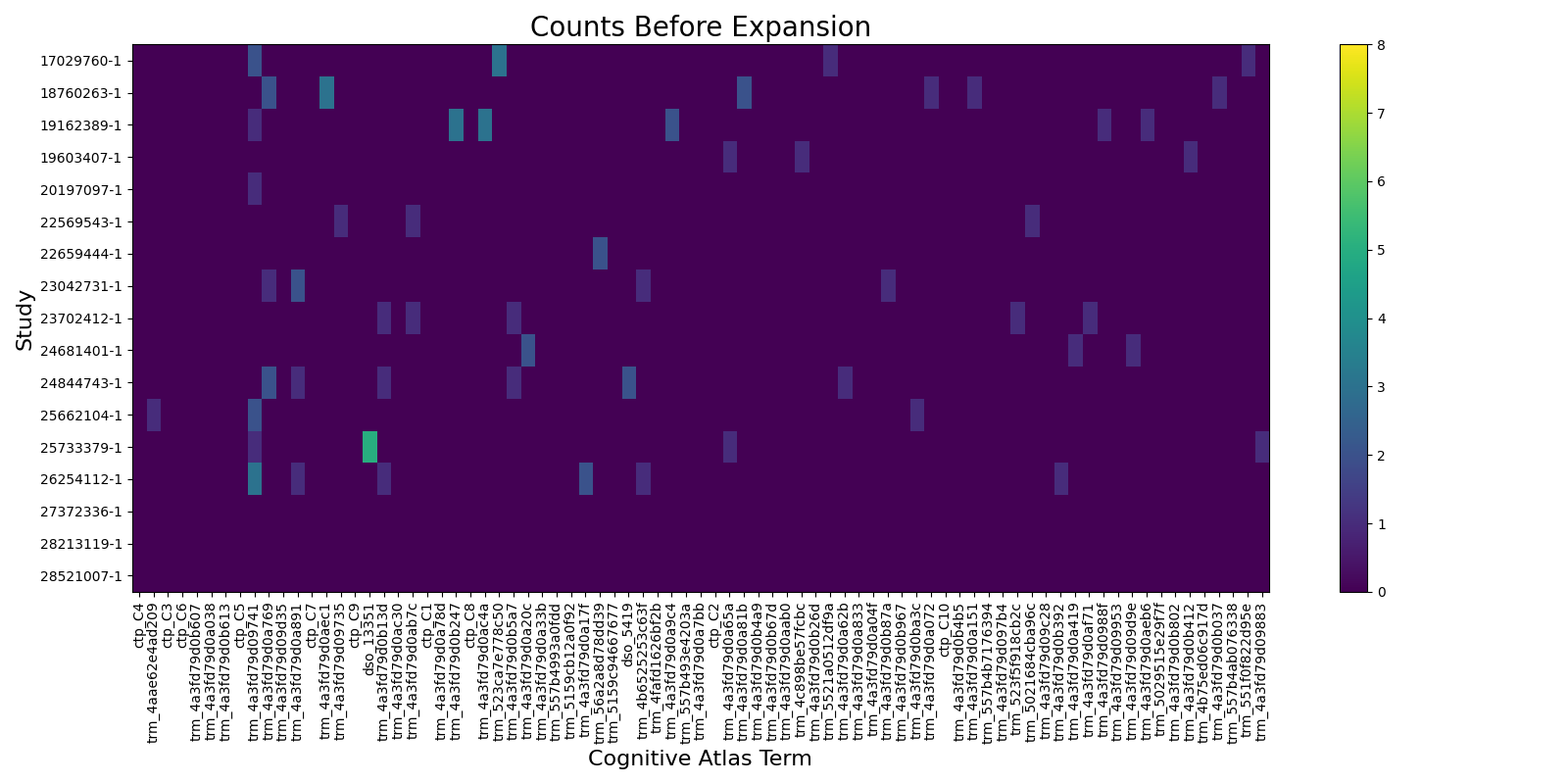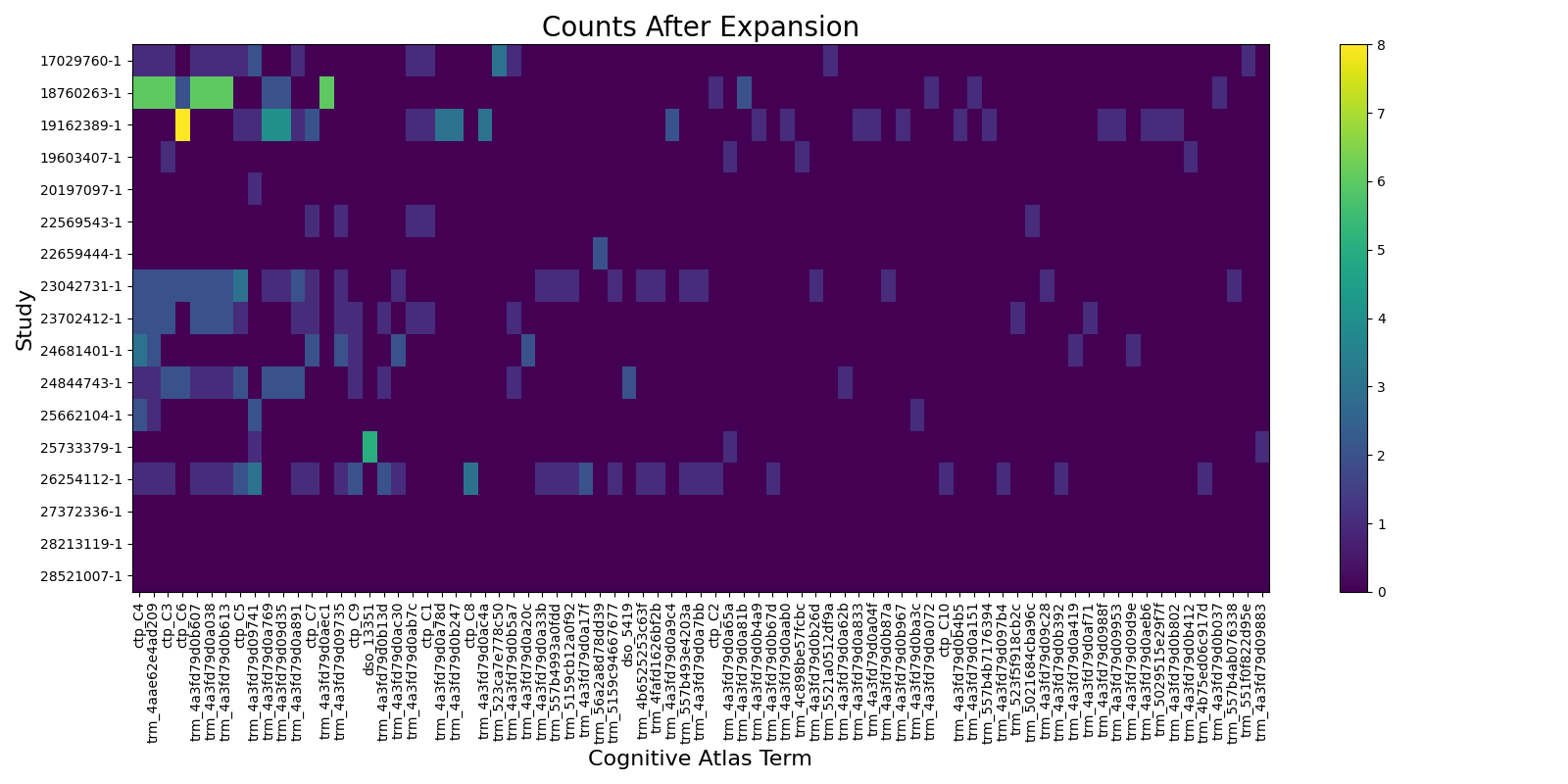Note
Click here to download the full example code
Work with the Cognitive Atlas
We can download the Cognitive Atlas and extract CogAt terms from text.
import os
import matplotlib.pyplot as plt
import numpy as np
import pandas as pd
import nimare
from nimare import annotate, extract
from nimare.tests.utils import get_test_data_path
Load dataset with abstracts
dset = nimare.dataset.Dataset(os.path.join(get_test_data_path(), "neurosynth_laird_studies.json"))
Download Cognitive Atlas
cogatlas = extract.download_cognitive_atlas(data_dir=get_test_data_path(), overwrite=False)
id_df = pd.read_csv(cogatlas["ids"])
rel_df = pd.read_csv(cogatlas["relationships"])
ID DataFrame
Relationships DataFrame
Extract Cognitive Atlas terms from text
counts_df, rep_text_df = annotate.cogat.extract_cogat(dset.texts, id_df, text_column="abstract")
Expand counts
weights = {"isKindOf": 1, "isPartOf": 1, "inCategory": 1}
expanded_df = annotate.cogat.expand_counts(counts_df, rel_df, weights)
# Sort by total count and reduce for better visualization
series = expanded_df.sum(axis=0)
series = series.sort_values(ascending=False)
series = series[series > 0]
columns = series.index.tolist()
Make some plots
We will reduce the dataframes to only columns with at least one count to make visualization easier.
# Raw counts
fig1, ax1 = plt.subplots(figsize=(16, 8))
pos = ax1.imshow(counts_df[columns].values, aspect="auto", vmin=0, vmax=np.max(expanded_df.values))
fig1.colorbar(pos, ax=ax1)
ax1.set_title("Counts Before Expansion", fontsize=20)
ax1.set_yticks(range(counts_df.shape[0]))
ax1.set_yticklabels(counts_df.index)
ax1.set_ylabel("Study", fontsize=16)
ax1.set_xticks(range(len(columns)))
ax1.set_xticklabels(columns, rotation=90)
ax1.set_xlabel("Cognitive Atlas Term", fontsize=16)
fig1.tight_layout()
fig1.show()
# Expanded counts
fig2, ax2 = plt.subplots(figsize=(16, 8))
pos = ax2.imshow(
expanded_df[columns].values, aspect="auto", vmin=0, vmax=np.max(expanded_df.values)
)
fig2.colorbar(pos, ax=ax2)
ax2.set_title("Counts After Expansion", fontsize=20)
ax2.set_yticks(range(counts_df.shape[0]))
ax2.set_yticklabels(counts_df.index)
ax2.set_ylabel("Study", fontsize=16)
ax2.set_xticks(range(len(columns)))
ax2.set_xticklabels(columns, rotation=90)
ax2.set_xlabel("Cognitive Atlas Term", fontsize=16)
fig2.tight_layout()
fig2.show()
Total running time of the script: ( 0 minutes 10.972 seconds)

